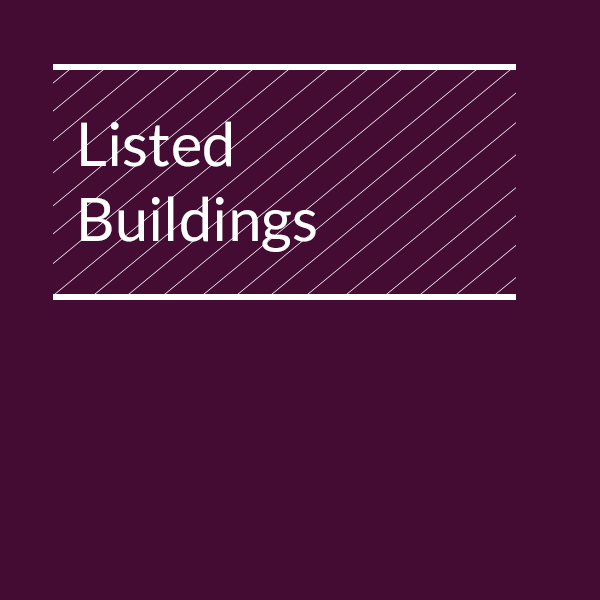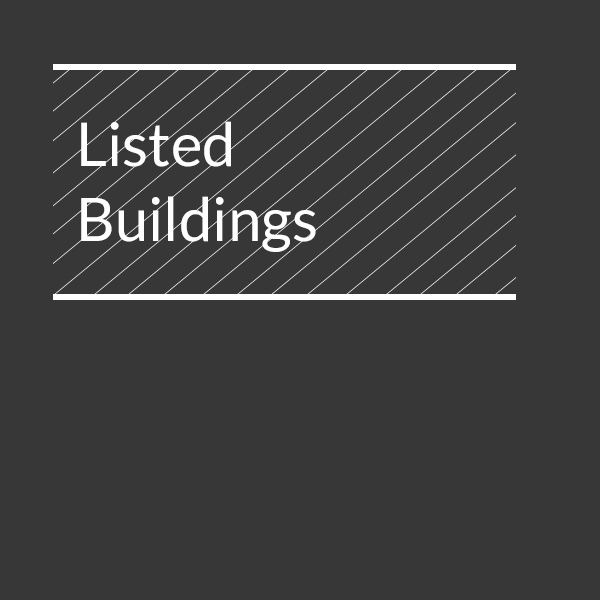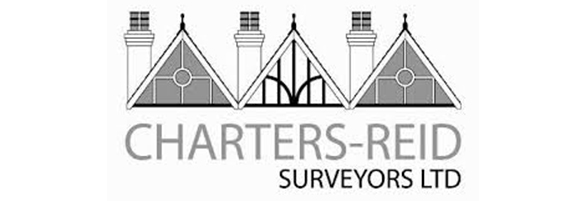Listed Buildings

A Listed Building is a building or structure which is included in a list of buildings of special architectural or historic interest. Listing acknowledges the building’s special interest and also helps us understand our shared history. The lists are registers which record the best National and Regional Buildings and are the responsibility of the Department of Culture, Media and Sport.
All types of buildings and structures are listed, from civic buildings to ordinary cottages, bridges, walls, milestones, stocks, telephone boxes and lampposts may even be listed. Not all the items on the lists are beautiful or attractive – some are included purely for their historical value and associations.
Why are buildings Listed?
Buildings are listed to ensure that their special interest is considered before decisions on their future are made.
This does not mean that the building and its surroundings must be preserved intact at all costs. What it does mean is that changes will only be permitted if they respect the particular character and interest of the building and its setting.
How are buildings Listed?
Most buildings have been selected by architectural experts supervised by Historic England, as part of a comprehensive national survey of Listed Buildings. The latest wide scale survey took place in the 1980’s. Sometimes it is necessary to add individual buildings to the list, which may have been overlooked during the survey. These buildings are ‘spot listed’.
All listed properties are judged against a set of national standards and criteria as follows:
- Architectural interest – eg buildings which have important architectural design, decoration or craftsmanship, or examples of particular building types, plan forms and construction techniques.
- Historical interest – buildings which show aspects of the nation’s social, economic, cultural or military history eg Wool Exchange.
- Close historical associations – with nationally important people or events eg Brontë Parsonage.
- Group value – where buildings form an important architectural group or a good example of planning eg Saltaire.
The older and more rare a building, the more likely it is to have historical interest, so all buildings built before 1700 which survive in anything like their original condition are listed. Most buildings built between 1700 and 1840 are also listed but are subject to more rigorous selection. After 1840, because more buildings of this period survive and because more were built, only those of definite quality and character or which are particularly rare, are listed. Listing is even more selective on buildings constructed after 1914, and buildings less than 30 years old are only listed if they are of outstanding quality or under threat. Those less than 10 years old cannot be listed.
What are the grades of Listed Buildings?
There are three grades of Listed Buildings based upon their relative importance:
Grade I
Buildings of exceptional importance
Grade II*
Buildings which are particularly important, these are often good quality buildings in their original conditions (2% of all Listed Buildings).
Grade II
Buildings of special interest which warrant preservation (97.6% of all Listed Buildings).
How much of a building is listed?
Buildings are listed in their entirety; there is no such thing as a listed facade or interior. Everything at the address is listed, including boundary walls, gates etc and most outbuildings.
Whatever the grade of the building, there is no distinction between the interior or exterior. Any objects or structures fixed to a listed building or included within the curtilage of the building which have formed part of the land since before 1948 are included in the listing including boundary walls and gates. All list entries include a description of the building. The description is intended to aid identification; it is not intended to provide a comprehensive record of all features of importance. Just because a feature is not mentioned in the entry it does not mean the feature is not of interest or it can be removed or altered without consent. This is especially relevant for internal features of interest.
What does it mean to own or occupy a Listed Building?
There are advantages and disadvantages in owning or occupying a Listed Building. People generally value old buildings. A well maintained Listed Building may appreciate in value more than other comparable buildings. In most cases maintaining a Listed Building should not be excessively costly. The main disadvantage is your lack of freedom to do exactly as you want with your buildings.
If you wish to demolish alter or extend a Listed Building either internally or externally in a way that affects its character you must apply for Listed Building Consent from the Council. Even relatively minor works such as painting, repairs and the removal of gateposts and walls may affect the character of a listed building. Yew Tree Associates can help you with this.
It is a criminal offence to demolish, alter or extend a listed building in any way which would affect its character as a building of special architectural or historic interest, unless the changes are authorised by listed building consent from the Council before any work takes place. The Council has responsibility for deciding if any of the proposed works will affect the character of the building so it is important to contact us before carrying out works or arranging for contractors to start work.
If you would like to discuss how we can help you with land and town planning and development advice contact us and we would be delighted to assist.

























